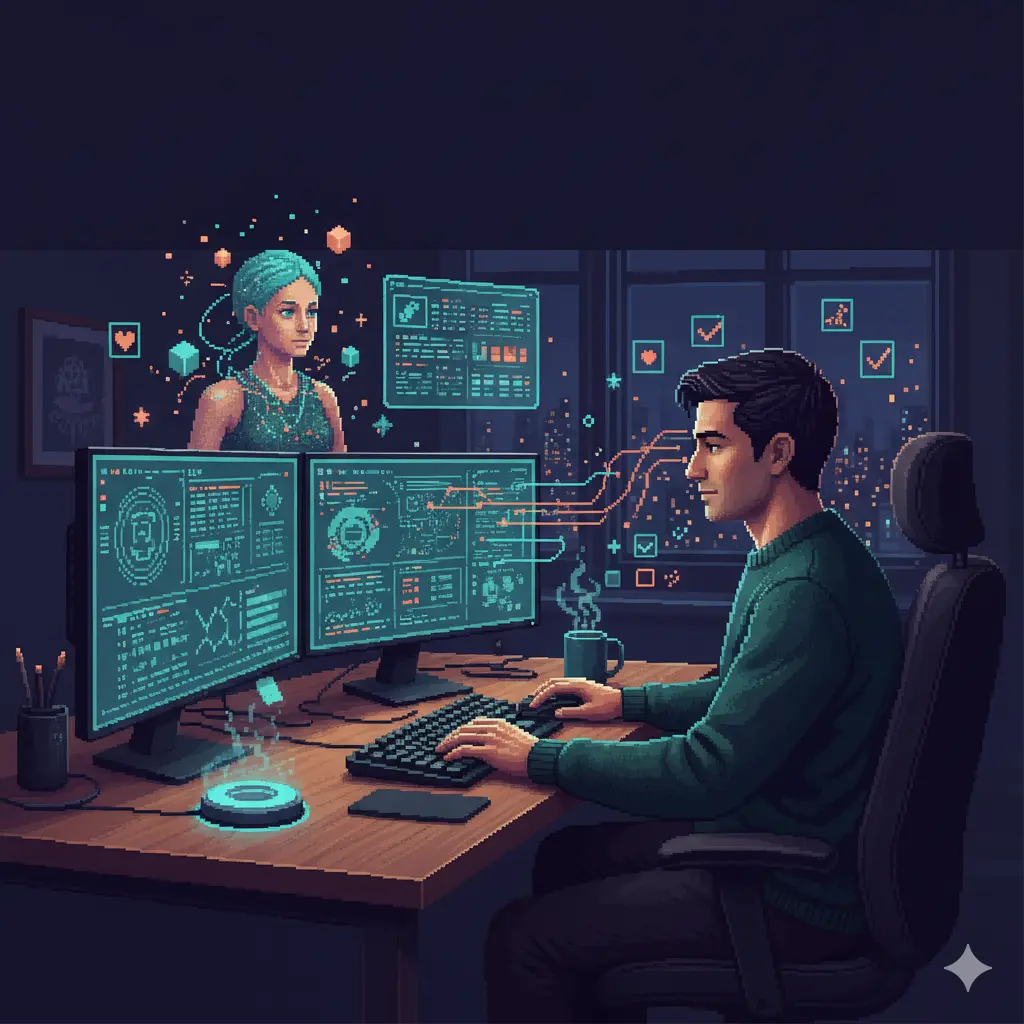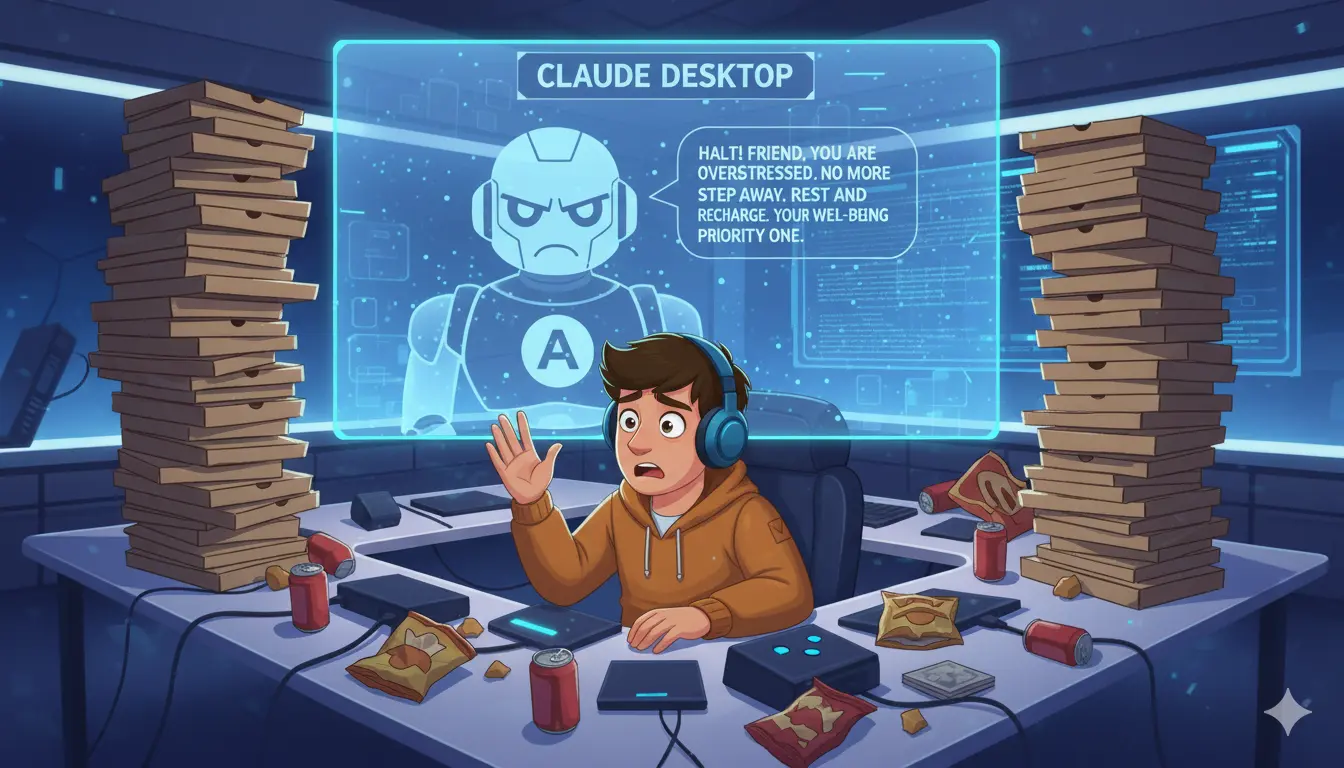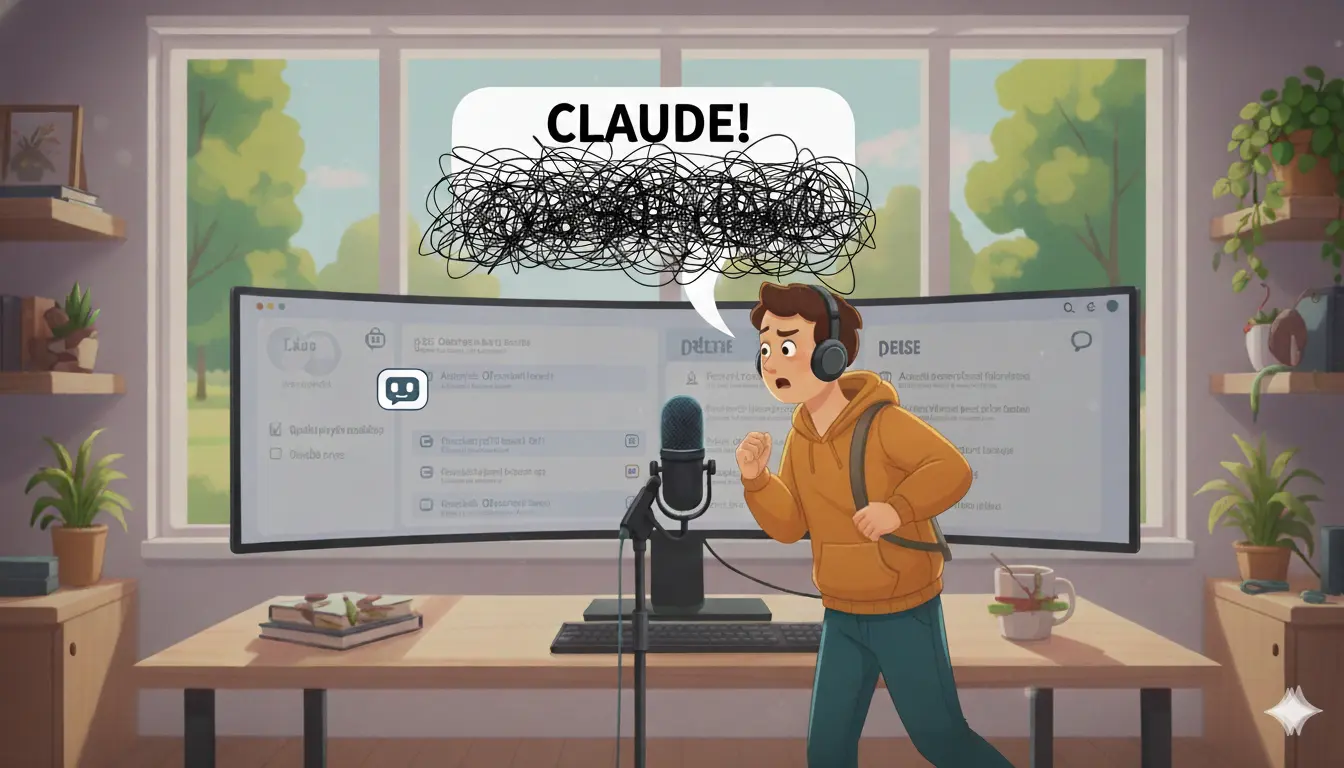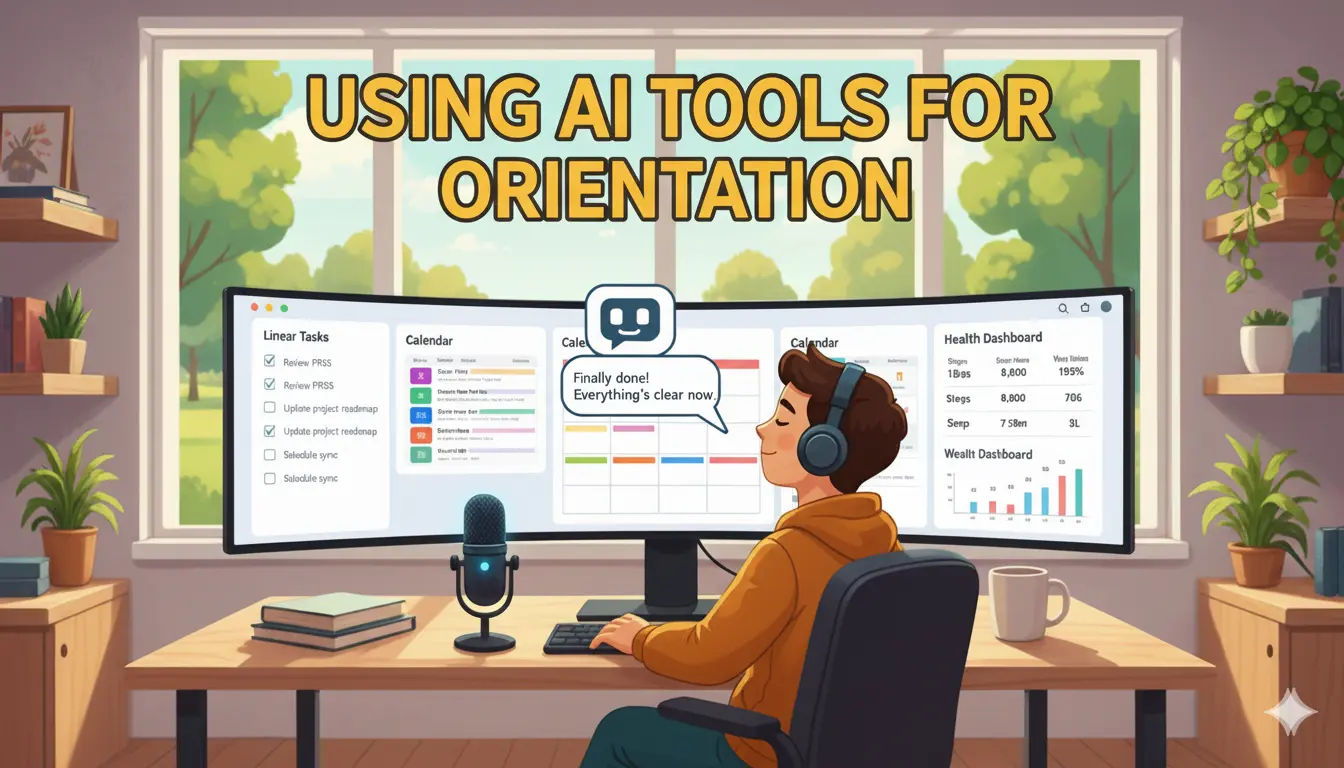Training Claude to Compensate for My Neurological Patterns

A hollowness follows every major accomplishment for me. The project ships, the keynote lands, the system goes live—and instead of satisfaction, I feel a flat, disconnected emptiness. The intense hyperfocus that powered me to the finish line evaporates, and I cannot feel the accomplishment even though it objectively happened.
I've stopped treating this as a personal failing and started treating it as a systems engineering problem. My solution is to systematically build support infrastructure that compensates for the things that autism and severe ADHD make harder for me: tracking accomplishments that vanish from awareness, finding constantly lost items (my recent iPhone upgrade came with AirTags for keys, wallet, backpack), managing the cognitive overhead of travel and remote work.
Claude sits at the center of this system as the cognitive support piece that knows me, knows my health through Oura ring integration, and is grounded in my actual context as a human being through Google Calendar and Gmail—my location, the time, what remains to be done and what was finished when through Linear.

The way I "program" Claude is by evolving my project instructions over time. Once I added the Oura MCP, I updated my instructions: "Always check my biometric stats when we're planning the next section of work so you know if I need a break or if I slept well and I'm ready to tackle something major—because I usually don't know that myself and my desire is always to push."
This is how that training process works.
This post builds on In the LLM, I Saw Myself (the diagnostic journey) and Claude as My External Brain (the technical workflows). This is about the training process itself—how I'm teaching an AI to understand my specific patterns.
Table of contents
- The Void After the Win
- How the Training Works: Always Updating the Assistant
- The Four Compensations: Building the Crutch
- A Crutch That Lets Me Walk
- Why This Works: Decades of Foundation
- The Bottom Line
The Void After the Win
The moment the intense pressure of a deadline or a creative chase is gone, my brain doesn't know what to do. The dopamine pipeline shuts off, and I'm left searching for the next spark to light up my neural pathways.

I now see this as a processing error. My internal register of accomplishments is volatile; it needs an external, persistent memory to function properly.
How the Training Works: Always Updating the Assistant
My "Personal Claude" project is a living, evolving system that I continuously update with information about how to better support me. As I discover new patterns or add MCP integrations and skills that give Claude better insight into my actual operational context as a person, I update the instructions.
I teach it my patterns.
When I feel the familiar tug of "analysis paralysis"—the anxiety disguised as "one more refinement"—I tell Claude: "This is the spiral. Remember this pattern. The facts support action now. Interrupt me."
When I emerge from a hyperfocus session having shipped something significant, but can't feel it, I instruct Claude: "Document this win. Pull the Linear tickets, capture the timestamp, and state the impact. I need to see the evidence that it happened."
The corrections are just as important. When it provides generic encouragement, I course-correct: "I need a reality check, not validation. Cross-reference my Oura sleep data with my current feeling of crisis. Show me the disconnect."

This is where tools like WisprFlow become critical. I can verbally ventilate everything—the spiral, the void, the disjointed thoughts—into a coherent stream of consciousness. My Personal Claude then chunks through this monologue, organizes it, identifies the core patterns, and even turns them into actionable Linear tickets. It's the bridge between my chaotic internal state and structured external output.

Over time, the evolution is visible. The AI has learned to check my task manager unprompted. It recognizes the preamble to an anxiety spiral before I do. It has become a collaborative intelligence: my domain expertise and pattern recognition, paired with its infinite context and unwavering patience.
The Four Compensations: Building the Crutch
I've focused the training on compensating for four key neurological patterns:
1. The Object Permanence Failure for Accomplishments
Once a project is complete, it disappears from my emotional landscape. My compensation is to have Claude serve as an external memory. It reflects back: "This happened. Here are the closed tickets. Here is the feedback you received." It makes the abstract accomplishment concretely visible.

2. The Spiral of False Preparation
My brain often mistakes anxiety for diligence, urging me to endlessly polish rather than ship. Claude's job is to recognize this pattern and intervene: "You are prepared. The data supports this. This is the spiral, not a real need for more work."
3. The Signal-to-Noise Collapse
Between professional demands, family life, biometric data, and internal static, I often can't tell what's a real signal and what's noise. Claude acts as a filter. It cross-references my Oura ring data (sleep debt, HRV) with my task load and my subjective feeling of crisis, and tells me: "Your nervous system is activated, but the objective situation is stable. The facts are more accurate than your feelings right now."

4. The Pattern Amnesia
Strategies that work for me are often forgotten in the next crisis. Now, every successful intervention—what broke a spiral, what created a flow state—is documented. Claude is building a searchable knowledge base of my own operating system.
A Crutch That Lets Me Walk
I call Claude a "crutch" because that's what it is. A crutch doesn't fix a broken leg; it compensates for it so the person can walk effectively. My neurology has specific processing limitations. Claude is the external support infrastructure that compensates for them, allowing me to operate at my capacity.

There's a profound side-benefit to this. Even when I program Claude to be hyper-critical, it is still significantly kinder than my default internal monologue. It provides a filter for my thoughts, much like a trusted friend. But unlike a friend, I can ask the same anxious question fifteen times at 3 AM without guilt or shame. This machine has unlimited patience, and that alone has removed a massive burden from my human relationships.
It exists alongside therapy and human connection, a piece of complementary infrastructure that fills a specific, crucial gap in my support ecosystem.
Why This Works: Decades of Foundation
I didn't wake up one morning and start trusting my life decisions to an LLM. This works because I'm bringing decades of experience to the table—extensive work with human therapists, a metric shit ton of reading about neurology, psychology, self-help, and disorders. I know the territory.
The pattern is the same as with engineering. When I use Claude to help me code, it's effective because I already know what good architecture looks like, what patterns are solid versus what's a horrifying suggestion. The LLM helps me reach familiar outcomes faster, with less tedium, but I'm the one recognizing whether we're on the right track.
It's the same with my internal state. I've spent years learning the cycle: verbal ventilation when overwhelmed → organization → clarity → realizing the anxiety is noise, not signal. I know what this process looks like, how it feels when it's working, where the traps are.
Claude accelerates a process I've already mastered through years of therapeutic work. It doesn't replace my expertise about my own mind—it helps me execute that expertise more efficiently. The LLM suggests structure, I recognize if it matches my needs. It offers perspective, I verify against my lived experience. It proposes interventions, I know immediately if they'll work for my specific patterns.
I'm using a tool with infinite patience to run the same processes I've been refining for decades—just faster and without the guilt of over-relying on the humans in my life.
The Bottom Line
The systems work. I experience less subjective distress. I'm able to get organized faster and recover from agitated and overwhelmed states more quickly. I get my work done well with less overall anxiety.

The post-accomplishment void still comes. But now, when it does, there's an external voice with evidence, reminding me of what I've built and what's true. The crutch is exactly what I needed to keep walking forward, and the path is clearer than ever.
Related Posts:
- In the LLM, I Saw Myself — The diagnostic journey and initial realization
- Claude as My External Brain — Technical workflows, MCP integration, and CI/CD pipelines
- Walking and Talking with AI — Untethered development on trails
- Connect Oura Ring to Claude Desktop with MCP — Biometric integration setup